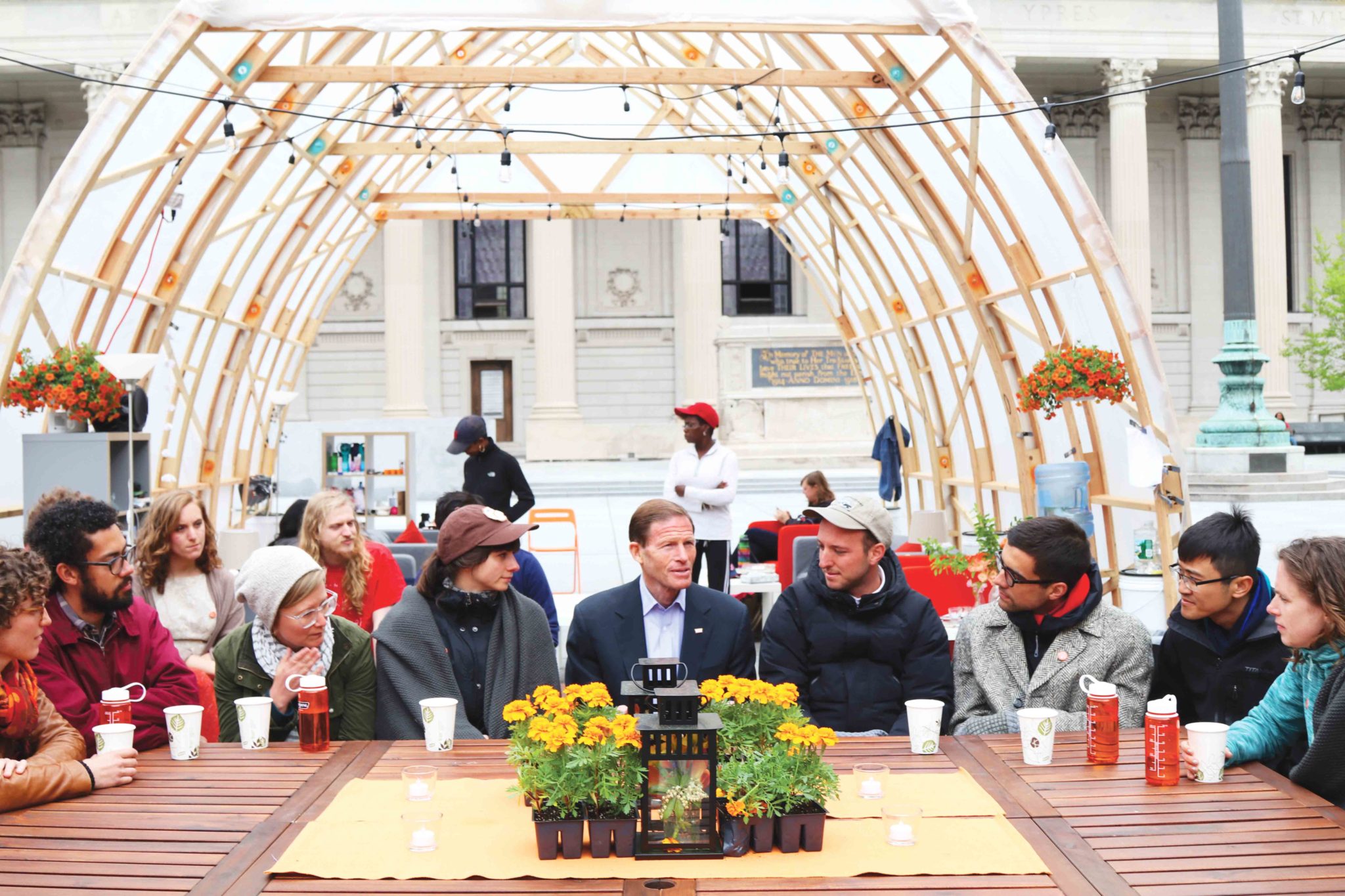
Local 33’s leadership has remained silent on its plans since the union withdrew eight National Labor Relations Board petitions on Monday night, effectively admitting defeat in a more than yearlong campaign to represent students in the Graduate School of Arts and Sciences who voted to unionize last February.
The withdrawal of the petitions marked a major step backward for Local 33 in its decades-long fight for unionization. Local 33 co-chair Robin Dawson GRD ’19 said in a statement on Monday that Local 33 withdrew the petitions because it did not believe the pro-management, Trump-led NLRB would be sympathetic to the graduate student union’s cause. On Wednesday, Trump’s nominee to fill the vacant fifth seat on the NLRB is likely to be confirmed — giving the board the conservative majority necessary to reverse the 2016 Columbia decision that allowed graduate students to unionize.
But many rank-and-file members remain in the dark about how and why Local 33 leadership elected to withdraw the petitions and have unanswered questions about the future of the union.
Nicholas Occhiuto GRD ’20 and Lily Higgins GRD ’21, both rank-and-file members of Local 33, said they were unaware that the union was considering withdrawing the petition. Occhiuto, who only found out about the withdrawal when he was contacted by the News, said he had no idea how Local 33 made the decision and that the union did not poll his department to weigh the opinions of its members. Similarly, Higgins said she was not privy to any conversations about withdrawing the petition in the days leading up to the decision.
“There was no sort of democratic process here,” said Occhiuto, who is a student in the sociology department, one of the eight that voted to unionize last year. “This was not a decision that was pulled from other union members or those who voted to unionize vis-a-vis department.”
Local 33 co-chairs Lena Eckert-Erdheim GRD ’20 and Dawson did not respond to repeated requests for comment Monday night and throughout Tuesday. Approached at her office Tuesday afternoon, Dawson said she would call the News after meeting with Eckert-Erdheim later in the day. But she ignored repeated requests for comment on Tuesday night.
Last December, 80 students affiliated with Local 33 signed an online petition expressing distrust for the union’s leadership and announcing the formation of a new group called the Union We Want. In a statement to the News, the Union We Want’s ad-hoc communications committee said the decision to withdraw the petitions makes sense. But the group maintained that Local 33 has not been transparent about how the decision was made.
“In the year and a half since Trump’s election, rank-and-file members have had no input in making this (long expected) decision, just as they had no input in the strategy that it effectively ends,” the Union We Want said in the statement. “Now is the time for Local 33 to have a frank, open, union-wide discussion about our strategy and prospects, so that members can collectively decide how to build a powerful union — and where to go with it.”
Occhiuto, who said his involvement in the union has waned this semester, told the News that the lack of transparency in Local 33’s decision making has been a long-standing problem. For her part, Higgins said she stepped down as an organizer at the end of the last semester, citing her dissatisfaction with the union’s top-down organizing strategy, which she says stems from its affiliation with the national labor organization UNITE-HERE. As an organizer, Higgins said, she felt she often provided false information to members because details known only to Local 33’s high-ranking members were withheld from her.
“When I first heard that the petition had been withdrawn I wasn’t surprised, but I was surprised that I hadn’t been part of a conversation about that decision,” Higgins said. “I’m assuming that that must have been an option that was on the table for much longer … There haven’t been conversations around at all.”
Higgins said all the union members she knows, except those directly involved in the steering committee, have questioned their support for Local 33 and its top-down model.
Since eight departments voted to unionize last February, Local 33 has held numerous marches and rallies, as well as a highly publicized hunger strike on Beinecke Plaza last March to protest Yale’s refusal to negotiate. The controversial hunger strike alienated some members, including Andrew Cohen GRD ’17, who said that the union lost his support at that point and that the decision-making process leading up to the strike was unclear.
Before Local 33 withdrew the petitions to the NLRB, the University was waiting to hear back about an appeal, submitted to the NLRB last April, contesting the micro-unit strategy behind Local 33’s department-by-department unionization vote. Yale has repeatedly argued that the vote did not represent the general sentiment of the graduate student population, since the eight departments contain less than 10 percent of all graduate students.
The legitimacy of the micro-unit vote hinged on a 2011 NLRB decision that was reversed last December. Now, it is unclear whether Local 33 stands a chance at recognition if it pursues a department-by-department approach.
Daniel Moerner GRD ’20, a graduate student in the philosophy department, said his department stopped engaging with the union after it was denied participation in the union election. He added that he opposes Local 33’s micro-unit bargaining process since members of his department never had the chance to vote.
“It’s unclear what the future will hold, but I hope it will have a more democratic process for the entire body of graduate students, [and all graduate students] will be able to vote,” Moerner said.
The NLRB granted graduate students at private universities the right to unionize in an August 2016 ruling.
Hailey Fuchs | hailey.fuchs@yale.edu







